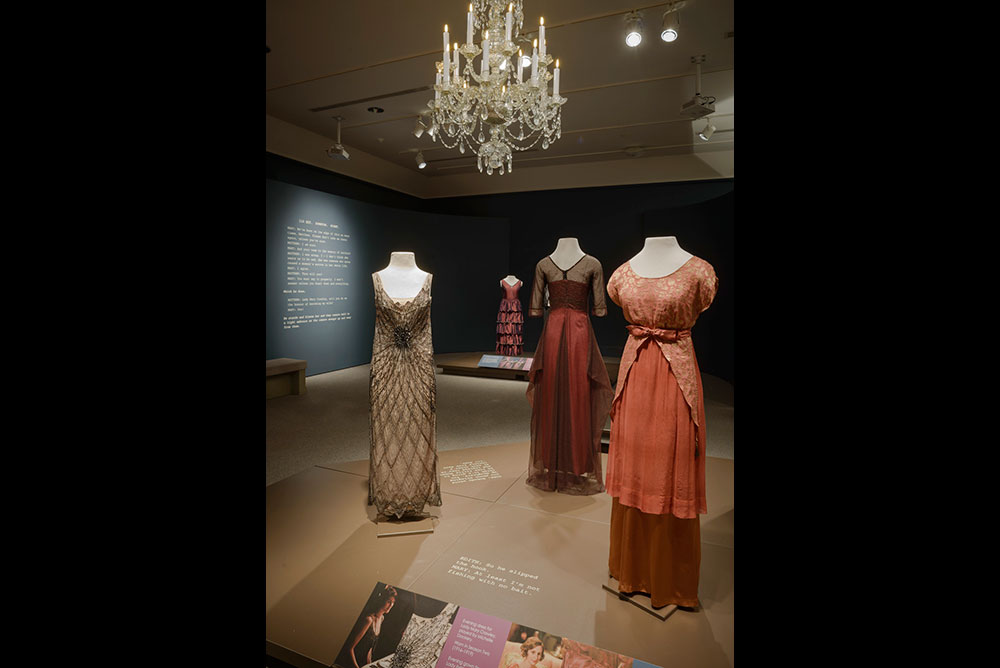
The Winterthur exhibit combines “Downton Abbey” finery with opposite numbers from the du Pont collection. Courtesy, Winterthur. Photography by James Schneck.
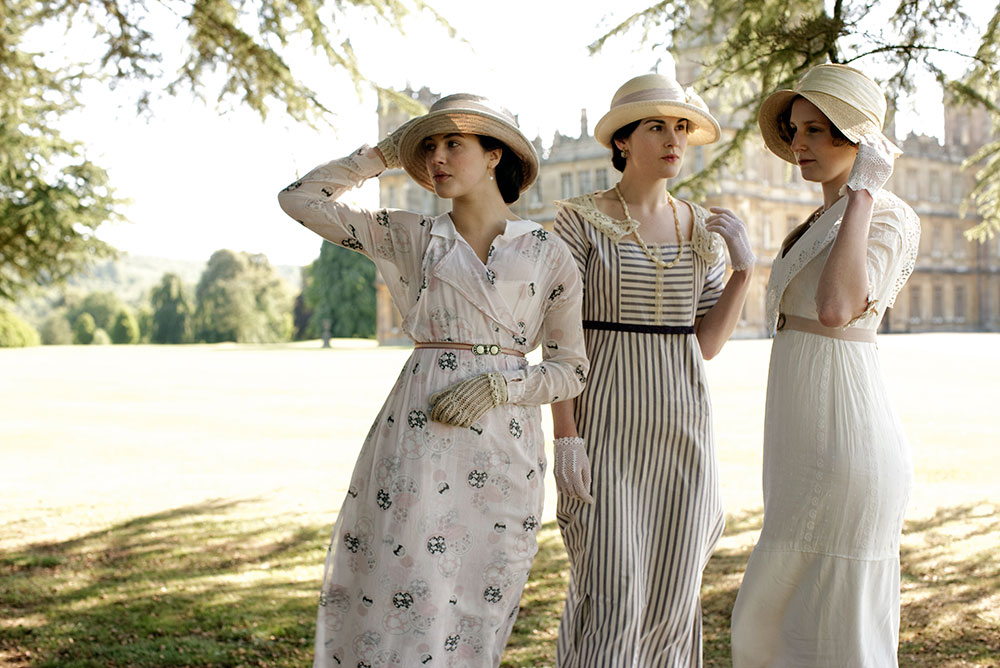
These post-Edwardian “frocks” are so similar to our own that they are emblematic of what Henry James called “a palpable imaginable visitable past.” Photo by Nick Briggs Carnival Film and Television Limited, 2010.
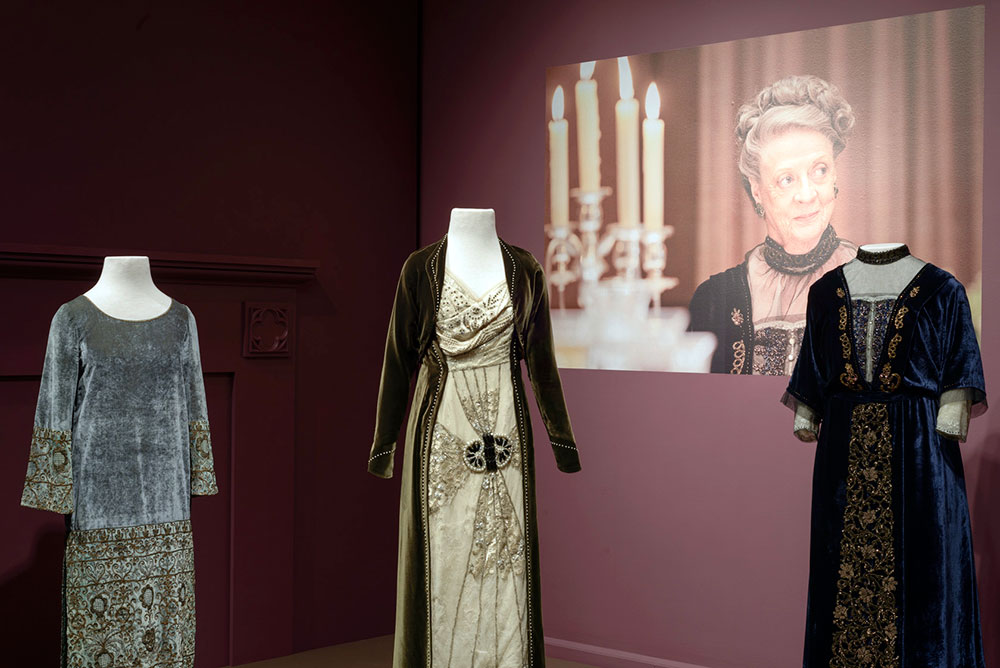
As the Dowager Countess of Grantham, Maggie Smith makes us love and loathe her, and brings dignified, embellished dresses similar to these to life. Courtesy, Winterthur. Photography by James Schneck.
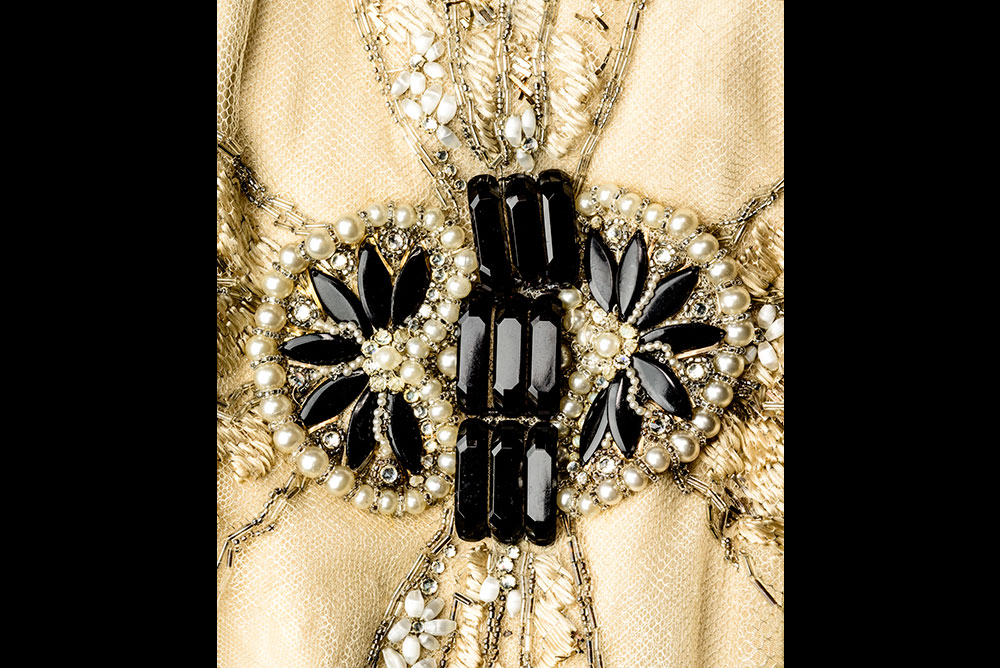
Speaking of embellishment, a detail from a gown like one the Dowager Countess wore. Courtesy, Winterthur. Photography by James Schneck.
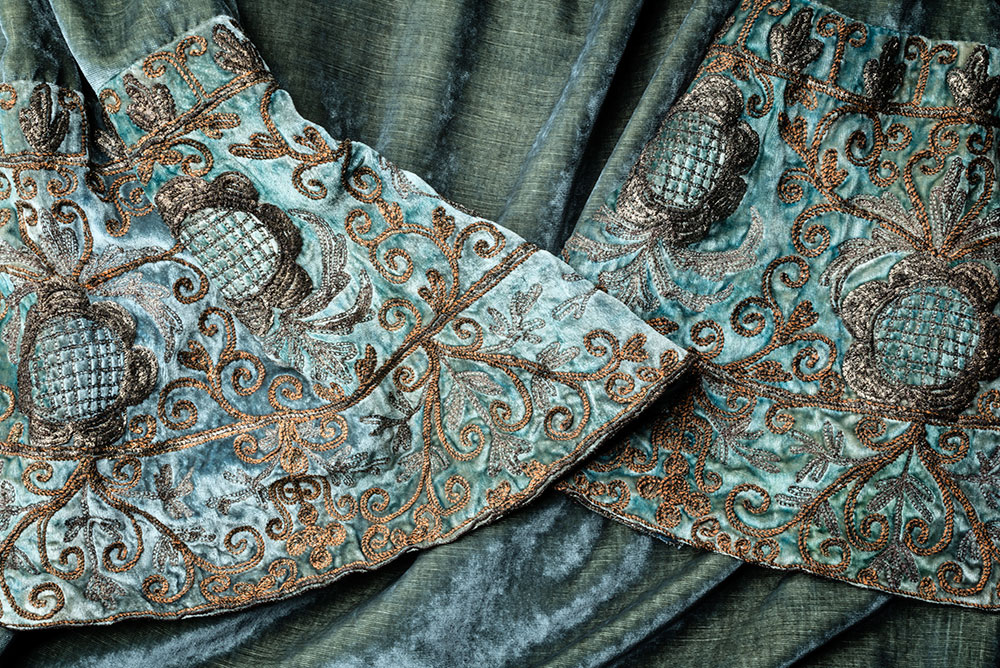
Sumptuous fabric such as this is a memory for most of us. Courtesy, Winterthur. Photography by James Schneck.
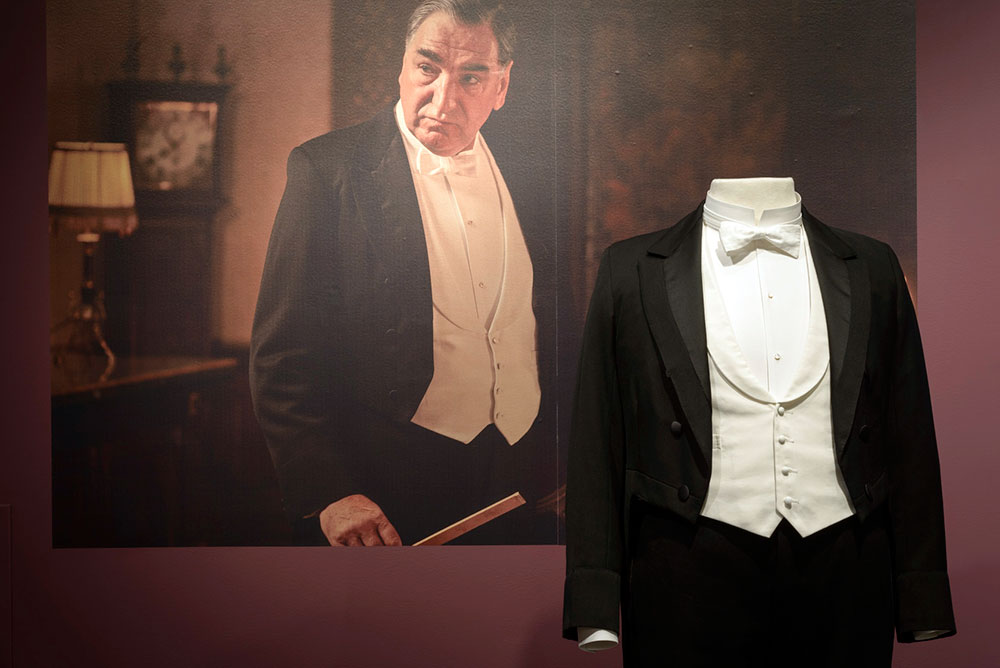
Downton Abbey’s butler has a first name, Charles, but most of us know him simply as Mr. Carson. Surely he and his uniform are what we mean when we say someone is “starchy.” Courtesy, Winterthur. Photography by James Schneck.
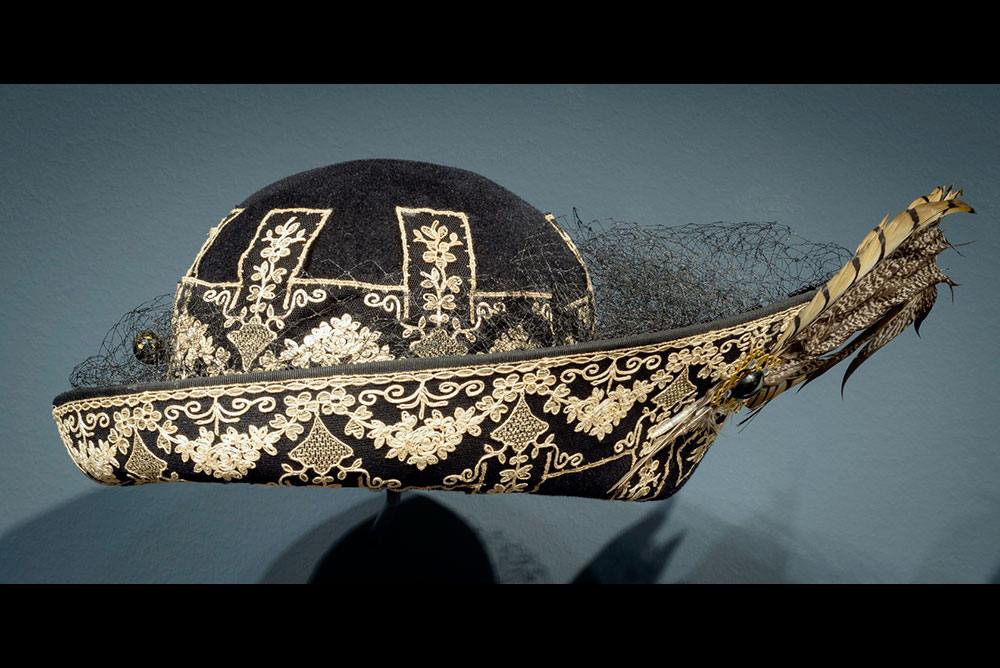
Hats could occupy their own Zip code in those days. Closest we come now is with church ladies and their Sunday bonnets. Courtesy, Winterthur. Photography by James Schneck.

Harem pants were daring back then (in the “Downton Abbey” photo in the background). They recur periodically, God help us, but manage to look just kinda stupid. Photo by Nick Briggs. Courtesy, Winterthur. Photography by James Schneck.
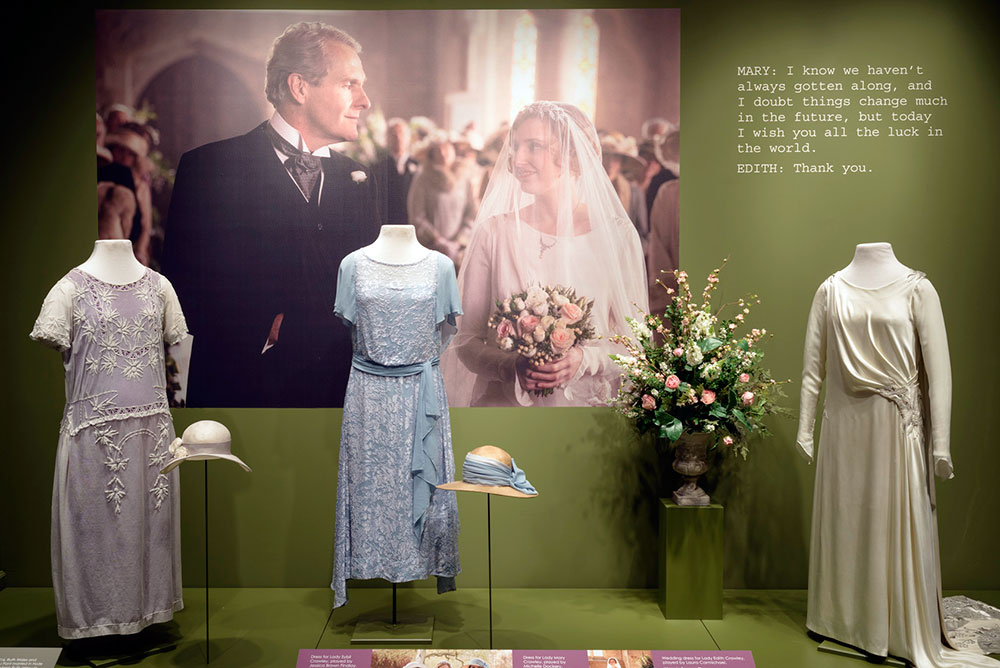
Socially correct weddings were (and still are) mainly daytime affairs–morning coats, not dinner jackets–and called for appropriate daytime frocks. Even wedding dresses of the era (far right) were more subdued than some of the Cinderella gowns seen today. Courtesy, Winterthur. Photography by James Schneck.
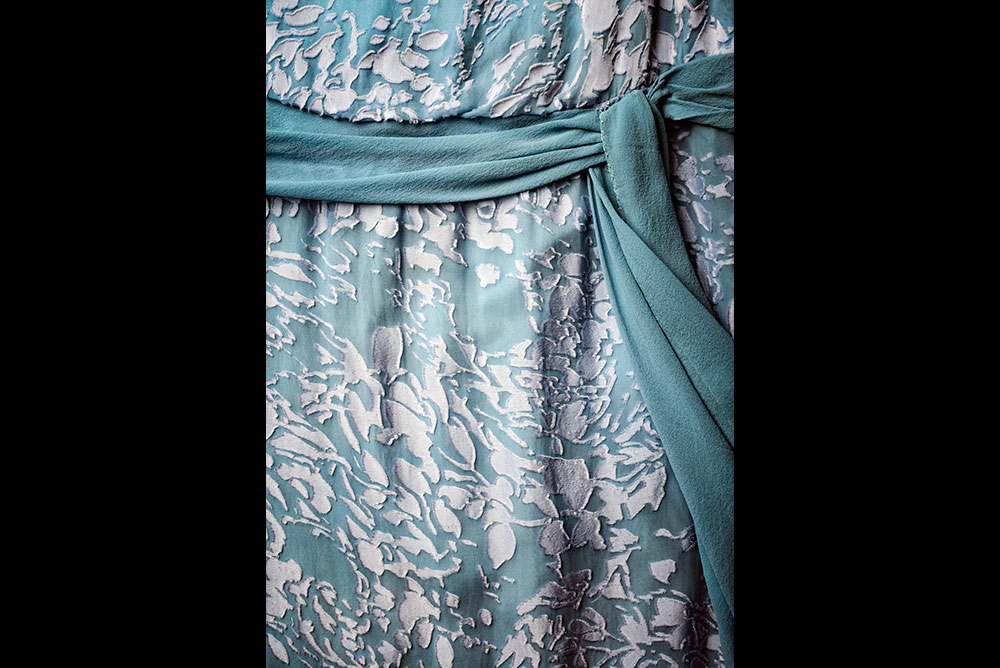
Detail of a daytime dress worn to Lady Edith’s wedding. Courtesy, Winterthur. Photography by James Schneck.
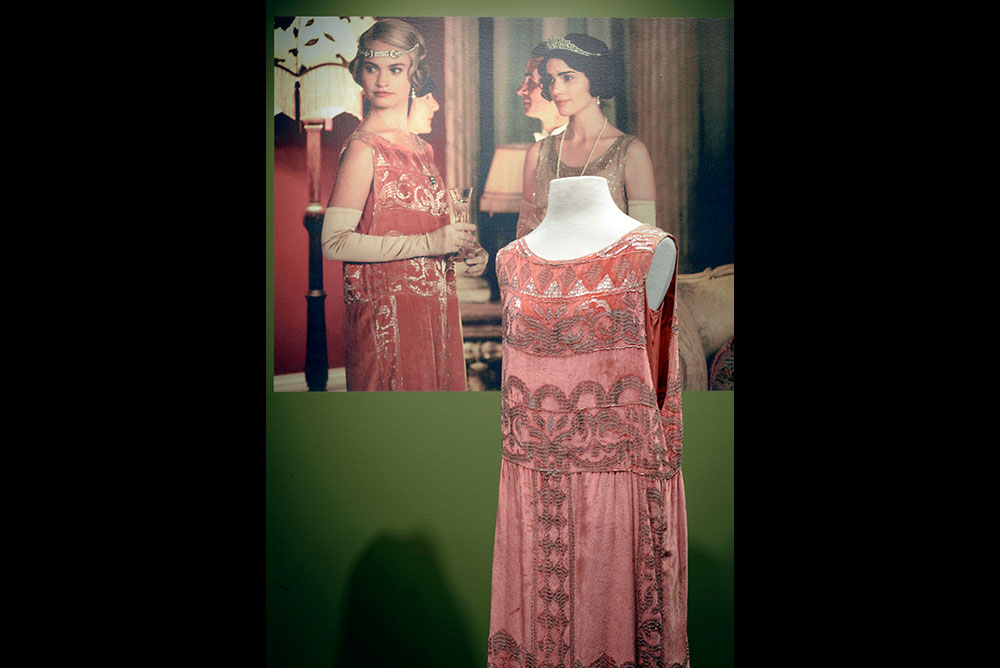
As simple as their shape was, party dresses of the “flapper” era had impressive amounts of embellishment. Courtesy, Winterthur. Photography by James Schneck.

There are still a few occasions that welcome ladies’ hats with all their sweet trimmings — the Gold Cup, summer teas and church fairs come to mind. Lovely. Courtesy, Winterthur. Photography by James Schneck.
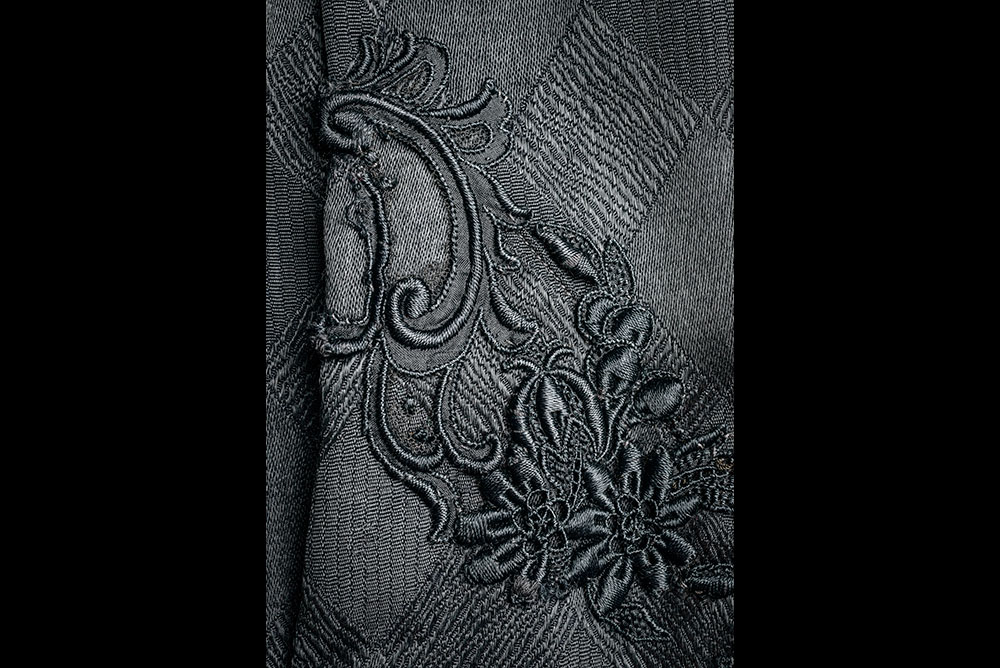
Trapunto work (raised needlework) is a form of embellishment rarely seen today. Courtesy, Winterthur. Photography by James Schneck.

Thanks for the heads up. Thanks to your story, there’s a group from NJ going to the exhibit.
I turned out to be Violet; at first I didn’t know whether that was a good or bad thing, but on the whole, I like it.
Don’t you want to know which character you are? Take BuzzFeed’s quiz: http://www.buzzfeed.com/justinabarca/which-downton-abbey-character-are-you.